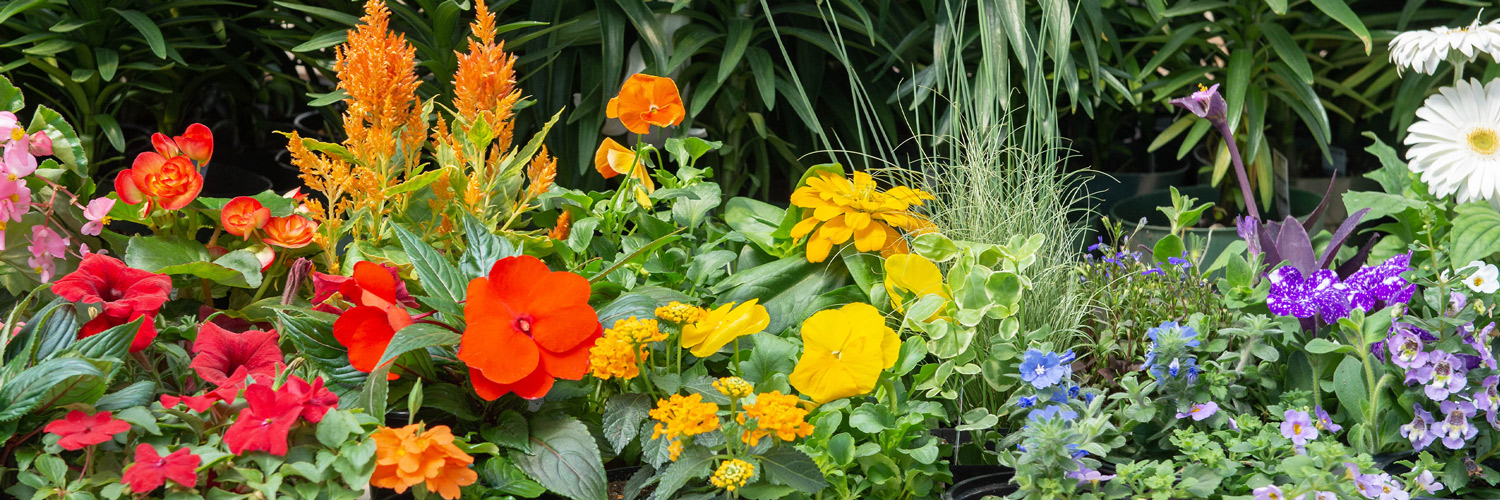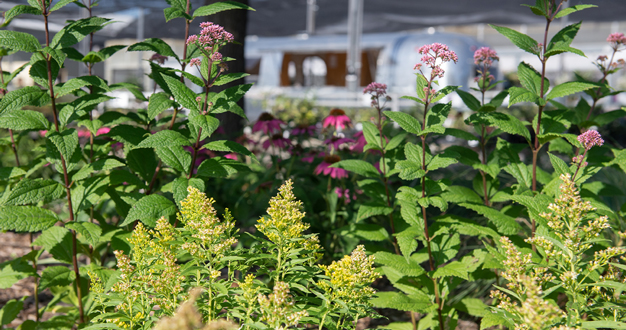
In spring, the world explodes in color! And nothing brings immediate, season-long color to your own outdoor spaces like blooming annuals. Not sure where to start? We can help. Just figure out if your space is sunny or shady, pick a color combination you love, and dive into flower planting season. Here we share some tips and ideas to help you get started.
Sun, Shade, or In-Between
All annual plants are different – some need lots of sun to grow and bloom their best. But others like it shady, and some can adapt to a wide range of light levels. Matching your plants with the light they’ll experience at your home is the first step to getting the beautiful foliage and flowers you want.
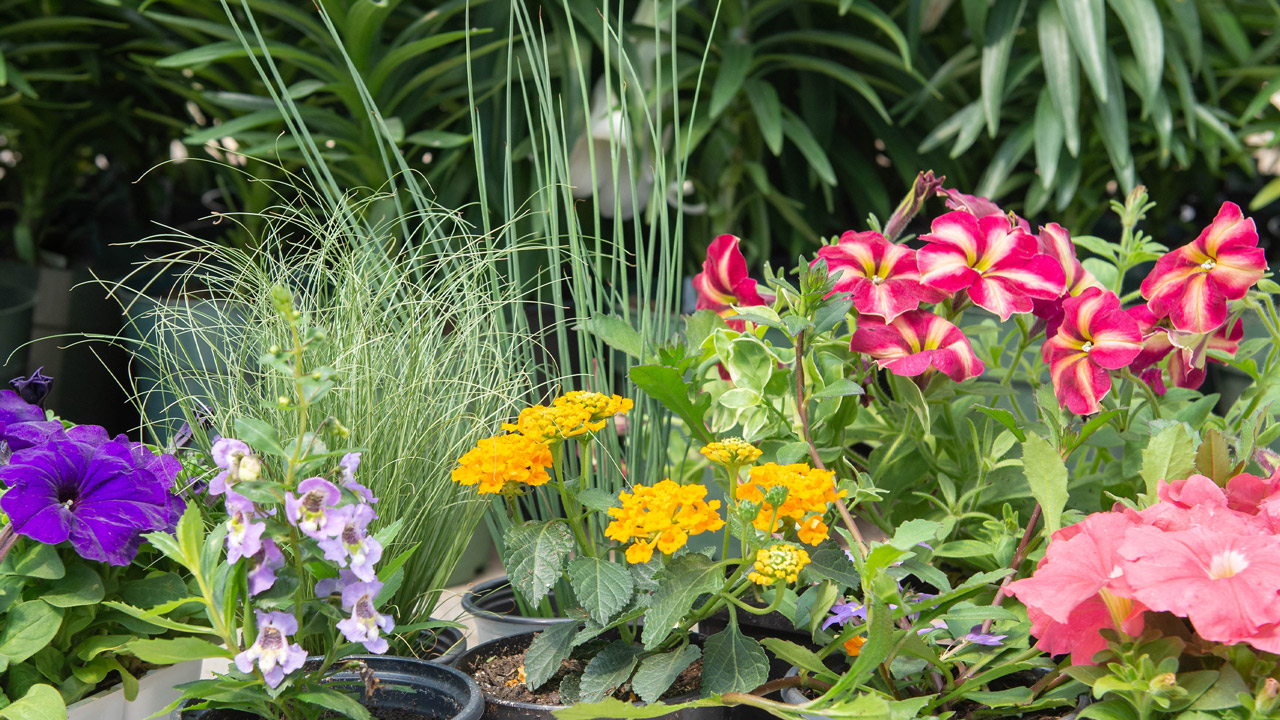
Full Sun
If the container or garden bed you’re planting in gets six or more hours of direct sun each day, that’s called “full sun”. Some successful sun-worshippers include lantana, scaevola, blooming vinca, angelonia, petunia, and annual grasses.
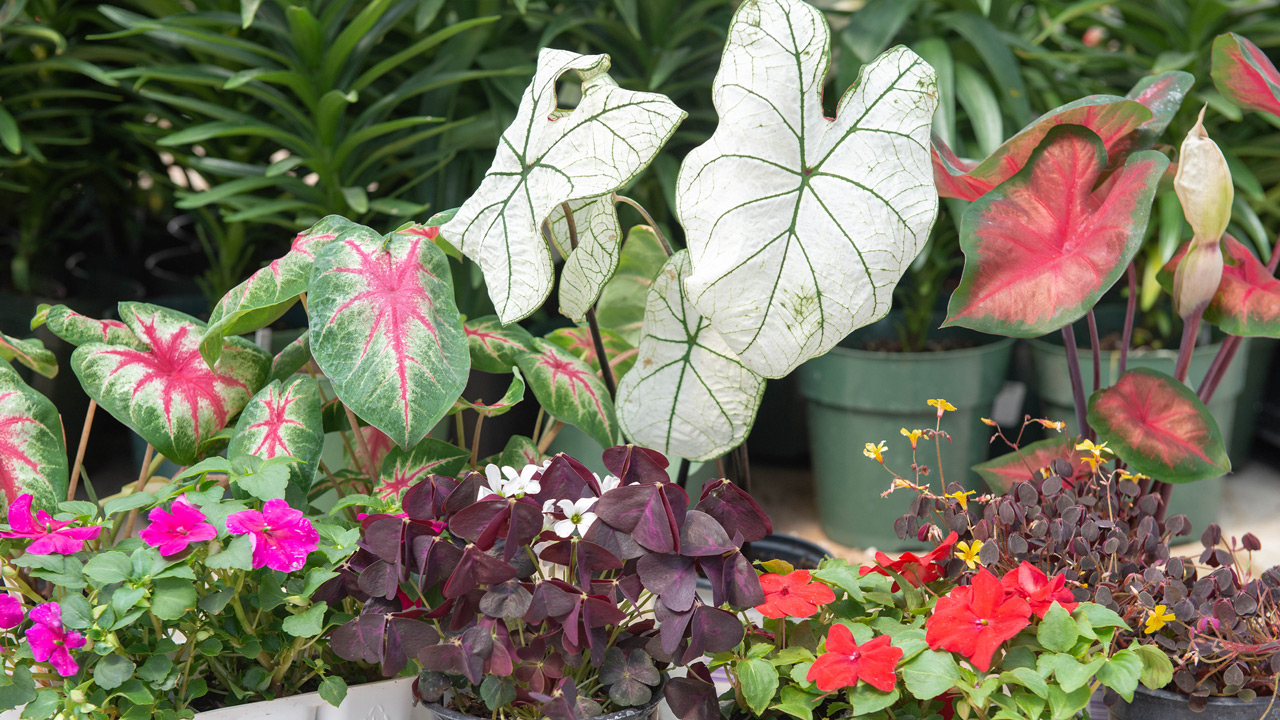
Shade
Locations that are generally bright but receive four or less hours of direct sun each day are described as “shade”. Or “shade” can also mean intermittent, dappled sunlight that comes and goes throughout the day – like you’d find under a shade tree. Some popular shade-loving blooms and foliage include impatiens, torenia, fuschia, oxalis, and caladium.
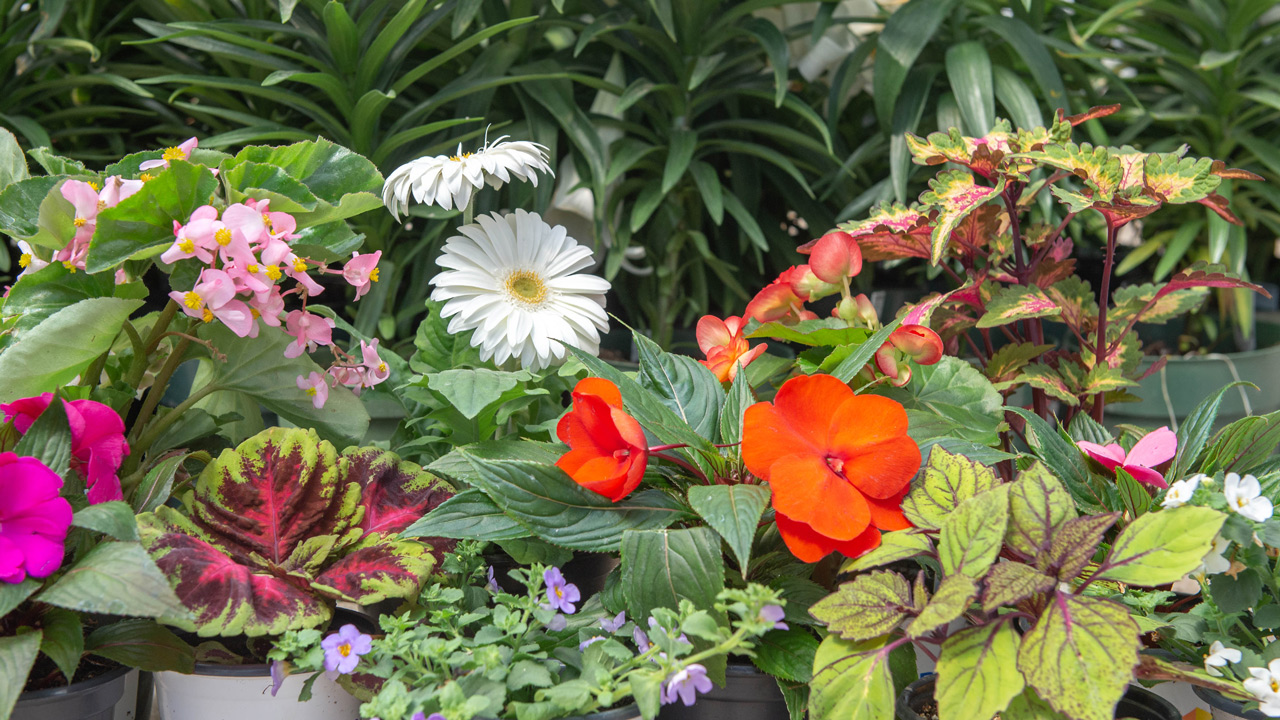
Part-Sun
And if your planting spot experiences sun that’s somewhere in between – anywhere from four to six hours of direct sun – look for annuals that like “part-sun”. Notable annuals in this category include coleus, New Guinea impatiens, begonias, bacopa, lysimachia, and gerbera daisies.
Consider Your Colors
We all have favorite colors we reach for when choosing everything from flowers to curtains. To better understand the relationships between colors and how they go together, it can be helpful to have a simple color wheel handy as a reference – maybe on your phone – while you shop.
A basic color wheel shows the primary colors – red, yellow, and blue – alternating with the secondary hues – orange, green, and purple – in a ring. Using the blooms in our containers and flowerbeds, we can create attractive color harmonies that please the eye and create certain effects for everyone who gets to enjoy them.

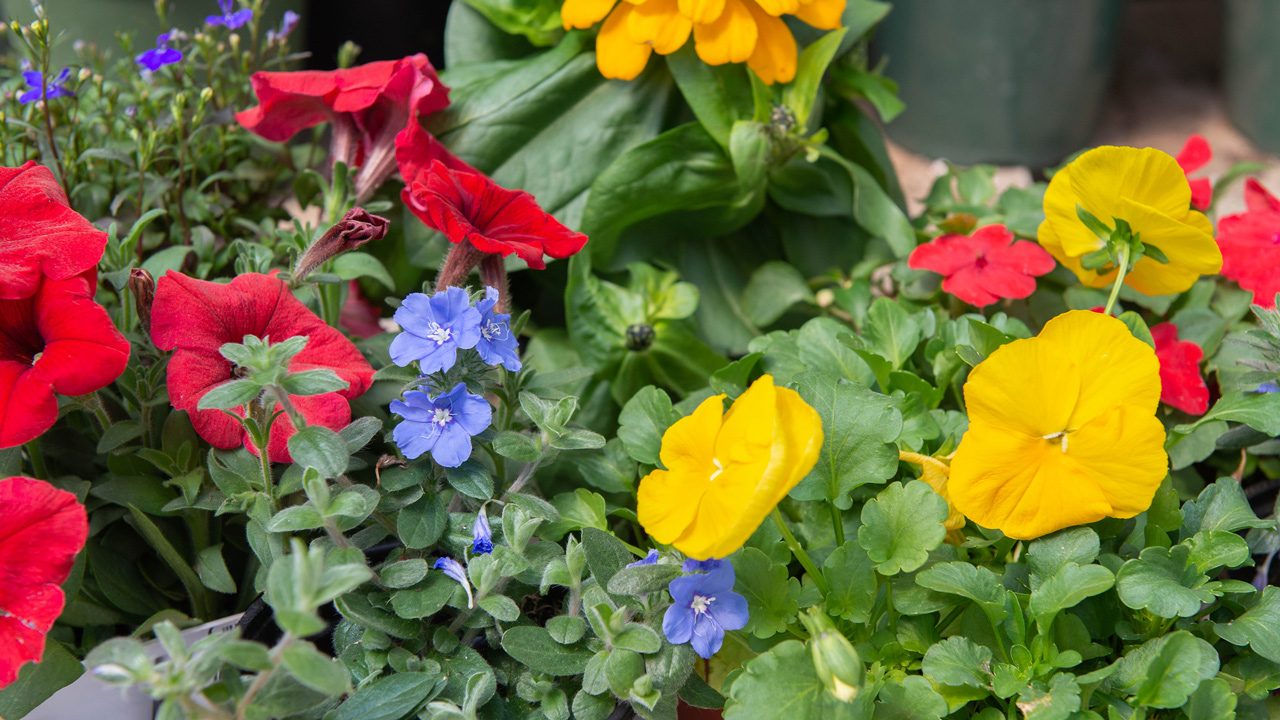
Complimentary + Triad Color Schemes
If you want your container arrangement or flowerbed to stand out from a distance, create a sense of energy, or draw attention to a special spot in the yard, you’ll need a complimentary or triad color harmony. Complimentary colors lie directly opposite of one another on the color wheel – like blue and orange, yellow and purple, or red and green. This pairing is vibrant and energetic, like the spirited colors of a football team. It commands attention – even at a distance – so it’s perfect for turning heads to your front step or as the focal point on a large patio. For energy with a little more balance, try a triad harmony, which uses three colors spaced equally around the wheel. Think red, yellow, and blue. Or purple, orange, and green.
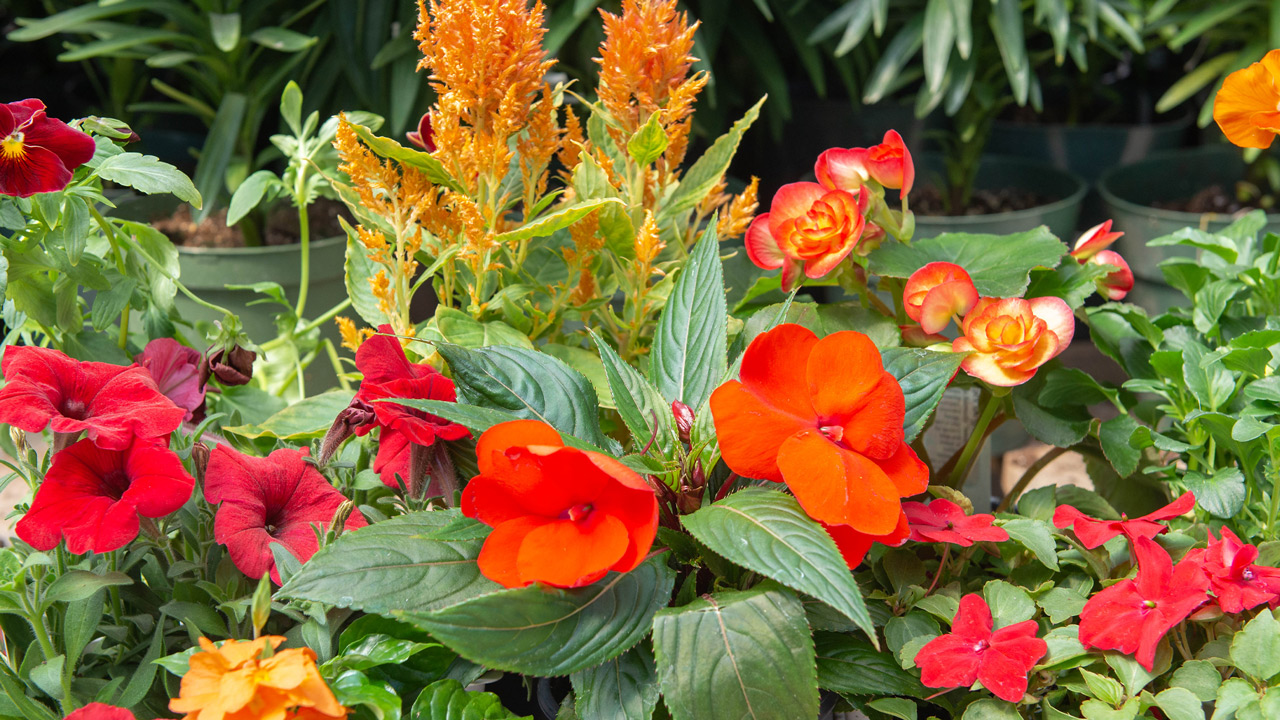
Monochromatic + Analogous Color Schemes
If a more elegant and soothing arrangement is your goal, look for colors that fit a monochromatic or analogous harmony instead. A monochromatic scheme is the simplest combination and brings together flowers and foliage in shades of the same color – like all purples or all oranges. For a bit more nuance in the arrangement, go up one step in complexity to an analogous scheme which includes two or more colors that lie next to each other on the color wheel – like red, orange, and yellow. Or purple, blue, and green. Both monochromatic and analogous combinations invite you to slow down and relax – perfect for quiet contemplation from your favorite deck chair.

Let’s Get Planting
Once you know your sun exposure and the colors you’re looking for, finding annual blooms and foliage you’ll love all season long is easy – even from a big selection like ours. With over 100 varieties – starting at $4.99 – we’re sure you’ll find all the colorful blooms and leafy texture you need for your outdoor containers and flowerbeds. Just stop by our open Greenhouse and if you’d like to bounce some ideas around, just ask. This is what we do – and we’re more than happy to help in any way we can.

